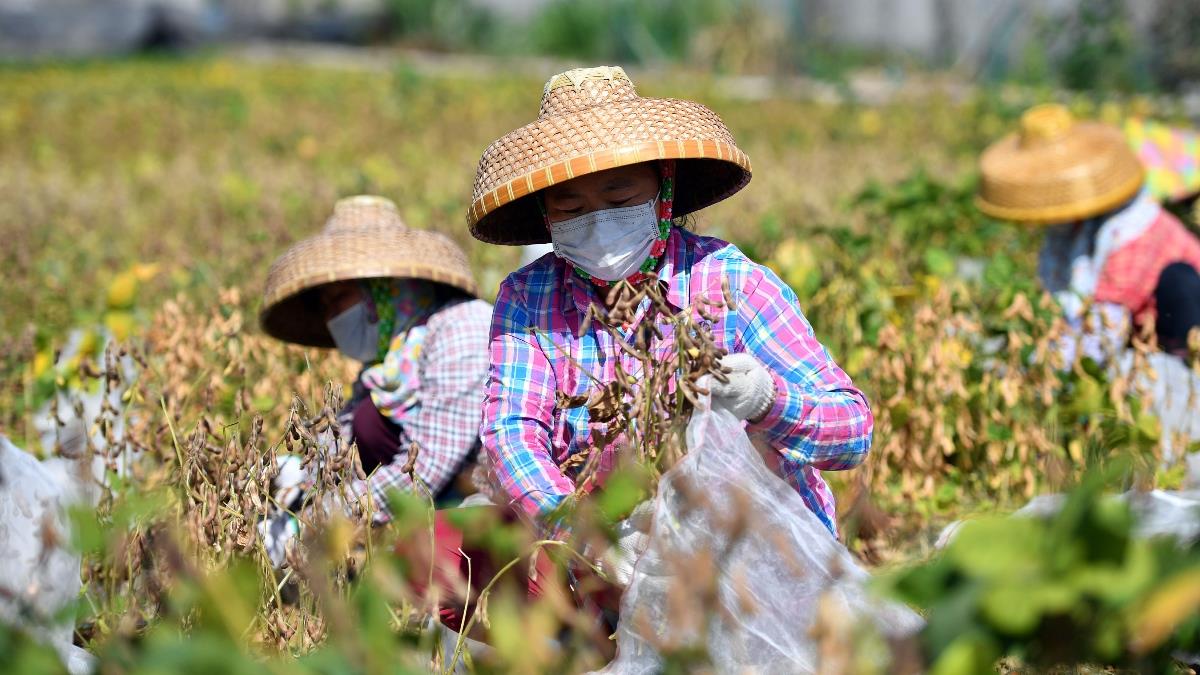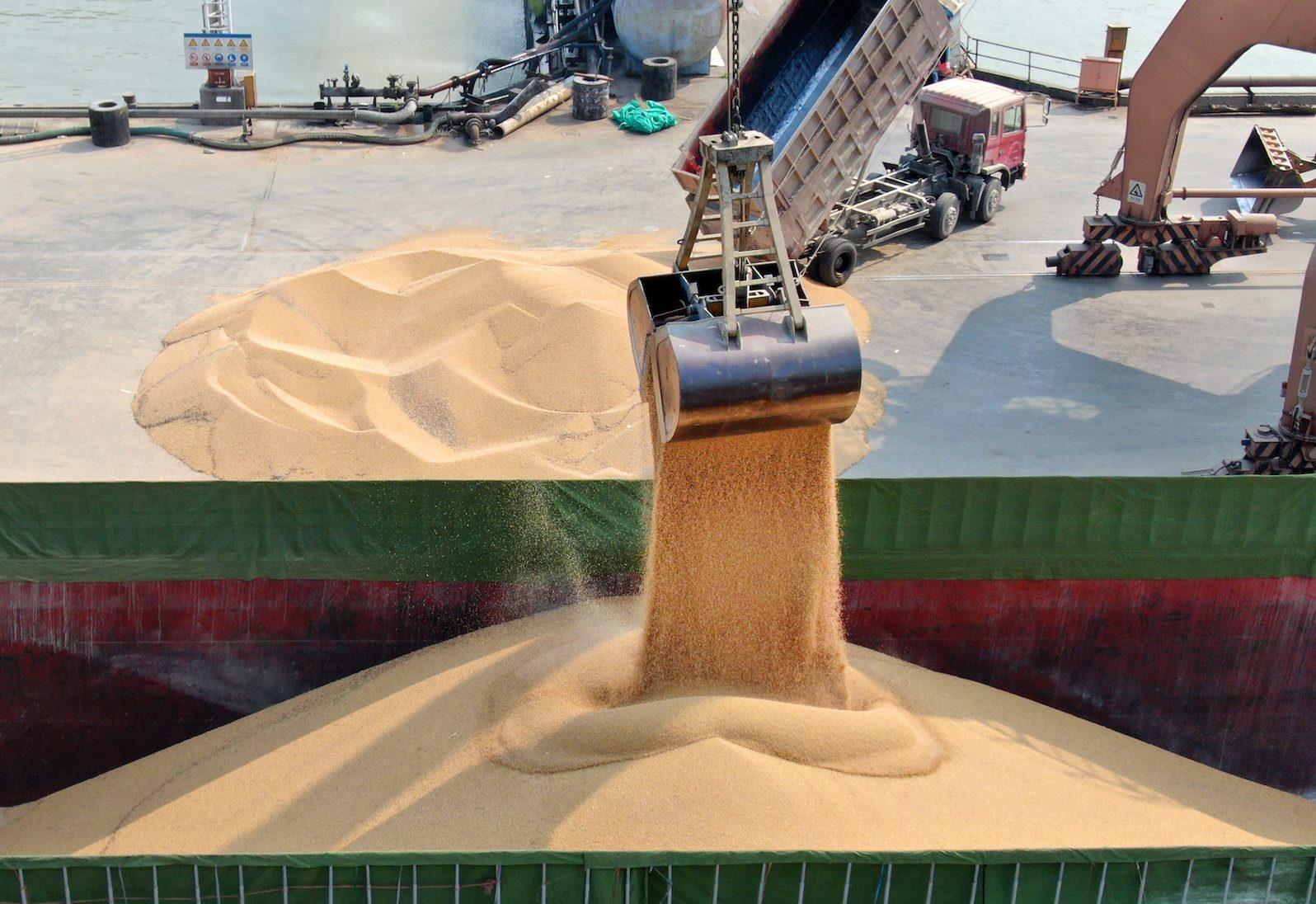(MENAFN- Asia Times)
Chinese President Xi Jinping has urged local governments to optimize their land resources to achieve food self-sufficiency and reduce reliance on grain imports in the coming years, the latest indication the country is bracing for a potential conflict with the United States.
At the Communist Party of China's (CPC) Central Economic Work conference held on December 8, Xi said China had to ensure grain security for its 1.4 billion people.
“The more food we have, the more we have to think about when there is no food,” Xi said.“I've repeatedly said that Chinese people must firmly hold their rice bowls in their own hands at all times and should never let others grab our necks in the matter of food supply, a basic survival issue.
“In the past, food was transferred from the South to the North, but now it is transferred from the North to the South. In some places, a lot of fertile fields are used to build farms and grow flowers, fruits and trees. What about the crops?” Xi said.
“For a big country like ours, ensuring the supply of primary products is a major strategic issue. Soybeans, iron ore, crude oil, natural gas, copper and aluminum ore… all these are connected to the fate of our nation.”
Xi said China had to achieve self-sufficiency for all these strategic materials and set up reserve systems to store them for use at special times.
Xi's speech came after the National Bureau of Statistics (NBS) said on December 6 that China's grain production increased by 13.4 million tons, or 2%, to 685 million tons in 2021 from last year. The NBS said extreme weather and flooding slashed Henan's grain output by only 2.8 million tons this year.
At the same time, China imported 130 million tons of crops in the first 10 months of 2021.

Farmers harvesting soybeans in Sanya, Hainan province. Photo: Xinhua
According to Guangdong South China Grain Trading Center, China imported 2.94 million tons of rice last year, up 15.6% from 2019, including 911,400 tons from Myanmar, 786,700 tons from Vietnam, 459,200 tons from Pakistan, 324,600 tons from Thailand, 232,800 tons from Cambodia and 75,000 tons from Laos.
China's rice exports, mainly to African countries, fell 16.1% to 2.3 million tons over the same period.
Chinese agricultural experts say the nation is not currently at risk of famine as its food deficit can be reduced by providing incentives to farmers to grow more staple crops like rice and fewer added value products like flowers, fruits and trees.
Others have said although China's food self-sufficiency is healthy at 80%, it could still face food shortages if the geopolitical environment suddenly shifts. That speaks to a conflict scenario where the US could seek to hinder or block China's food imports at sea.
Planners are moving to mitigate the risk. In July 2020, the local government in Chengdu, Sichuan province, said farmers could receive an annual subsidy of 200 yuan ($31.40) per hectare if they stopped growing flowers, fruit and trees and shifted to rice production. Other cities in Sichuan, including Guangyuan, Chongzhou and Qionglai City, followed suit.
In 2019, China recorded a small surplus in its rice trading. The government said it imported more rice last year because South Asian long-grain rice was on average 25% cheaper than Chinese rice. In late 2020, China started allowing the import of non-basmati rice from India, which has now become a major rice supplier to China.
Due to drought in the United States and Canada and adverse weather in Russia, global wheat prices rose to US$294 per ton in October, the highest level since 2013.
China has recently snapped up cargoes of Australian wheat, although Beijing has imposed anti-dumping duties on Australian wine and barley and reduced coal purchases amid an intensifying bilateral spat over Canberra's call for an independent inquiry into the origins of Covid-19.
China's total grain planting area this year rose 0.7% to 106 million hectares while sowing areas of corn and wheat increased by 5% and 0.8%, respectively. The sowing area of rice decreased 0.5% while that of soybeans dropped by 14.8%. The NBS said farmers were reluctant to grow soybeans due to the crop's low profit margin compared with corn.
China consumes about 110 million tons of soybeans annually but can only self-supply 10-20 million tons. Brazil currently contributes 60% of China's soybeans imports while the United States supplies 30%. China is seeking to import soybeans from Russia and some Southeast Asia countries to diversify its dependence on the US.
Li Guoxiang, a researcher with the Rural Development Institute at the Chinese Academy of Social Sciences, said global wheat prices had risen 50% this year, which has affected China's domestic food prices.

Soybeans from Ukraine are unloaded at the port in Nantong, in eastern China. Imports of soy used to come from the US, but have slumped since the trade war began in 2018. Photo: AFP
Li said China had to closely monitor the fluctuations of global grain prices as its food consumption would continue to grow in the coming years. He said the country would remain firm in its commitment to pursuing food security.
He also said China should further improve its insurance system to ensure that farmers could make money even if they faced extreme weather.
Jiang Wenlai, a researcher with the Institute of Agricultural Resources and Regional Planning at the Chinese Academy of Agricultural Sciences, said he believed that the government's subsidies to farmers, a lifeline to maintain farmlands and guarantee produce prices, would help China ensure its food security.
Jiang said it was possible that China's total grain production could reach 700 million tons next year, up 2.2% from this year.
The Chinese Academy of Social Sciences said in a research report in August 2020 that China could face a food shortage of about 130 million tonnes per year between 2021 and 2025. It said wheat and rice supply would remain stable but corn, a major feedstuff, had then already shown signs of shortage.
Another report published by the Chinese Academy of Agricultural Sciences said China's food self-sufficiency rate would stay at around 80% until 2025.
Lo Chu-ping, a professor at the Department of Agricultural Economics, National Taiwan University, said China's food self-sufficiency rate was within a healthy range, compared with that of Japan, which is around 40%.
However, Lo said that with a huge population China's food security would remain vulnerable due to deteriorating US-China relations, rising global food prices and what he perceives as insufficient food reserves.
Follow Jeff Pao on Twitter at @jeffpao3
Read: China lends helping hand to cash-starved property developers
MENAFN14122021000159011032ID1103359025